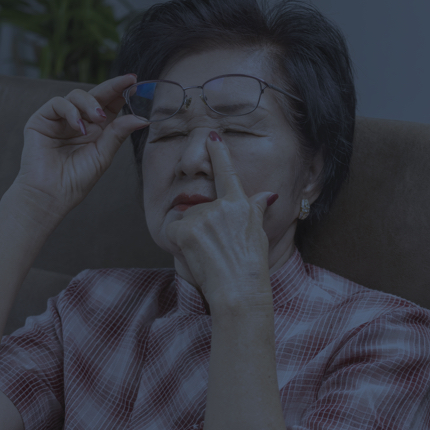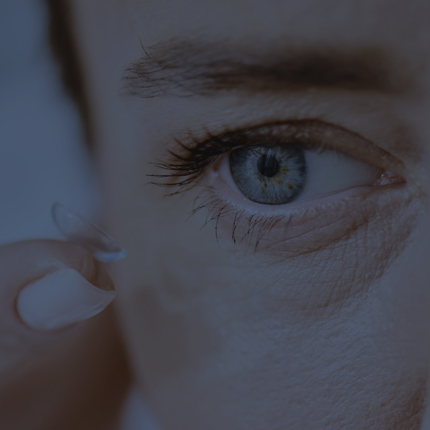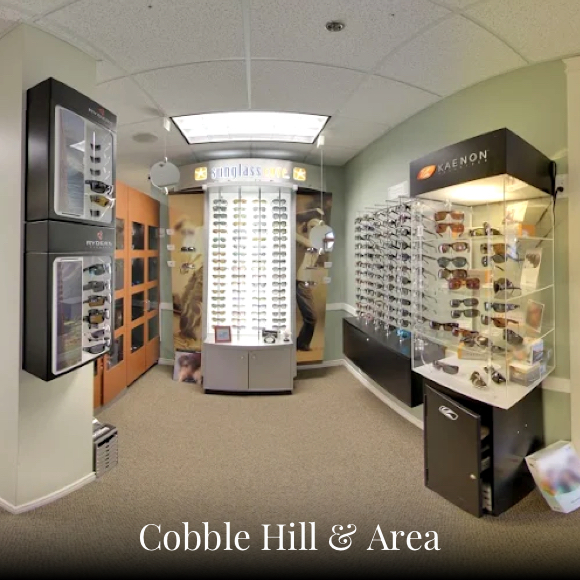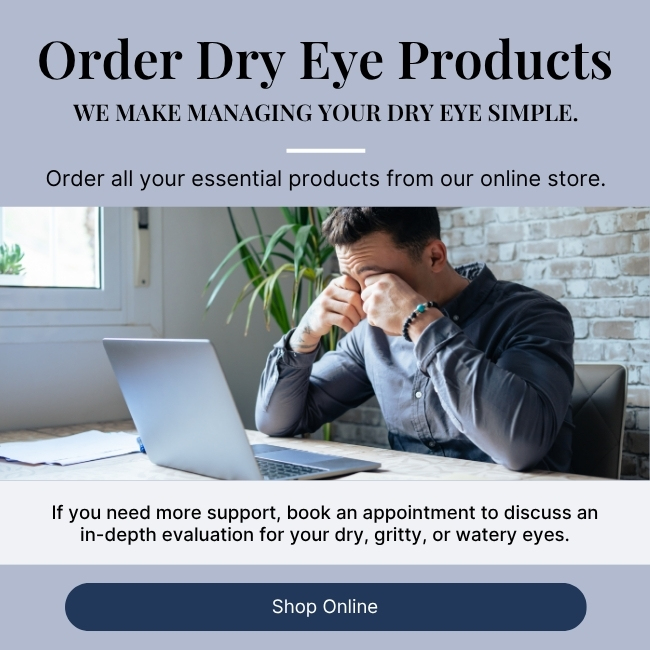Eye drops can offer convenient, on-the-go relief from uncomfortable dry eye symptoms. If you are new to eye drops, you may be wondering how often you should be using them. How often you should use eye drops will depend on a range of factors, including the severity of your dry eyes and what type of eye drops you are using.
While eye drops can usually be purchased over the counter, it is still important to consult with your eye doctor when starting any new dry eye treatment.
Understanding Dry Eyes & Eye Drops
Dry eye impacts an estimated 30% of Canadians, making it one of the most common eye conditions nationwide. Dry eyes occur when your eyes either do not produce enough tears or when your tears evaporate too quickly. This can lead to a range of uncomfortable symptoms, including irritation, redness, and even blurry vision.
There are a wide range of factors that may contribute to dry eye, including age, certain medications, medical conditions like Sjogren’s syndrome, environmental factors, and prolonged screen time.
Using Eye Drops to Treat Dry Eyes
Many individuals turn to over-the-counter eye drops to help alleviate uncomfortable dry eye symptoms. Lubricating eye drops can provide temporary relief by replenishing much-needed hydration to your eye’s surface and reducing inflammation.
Eye drops for dry eyes are easily accessible and available at most drug stores without a prescription. However, your eye doctor can advise you on the best eye drops for your specific vision care needs, and give you guidance on how often you should use your drops.
Types of Eye Drops
There are a wide range of eye drops available to treat dry eye, including over-the-counter options at your local drugstore or prescription eye drops from your eye doctor. These eye drops may address different aspects of dry eyes, including:
- Lubricating eye drops: Lubricating eye drops, sometimes called artificial tears, can mimic tears and provide immediate relief from dryness. Lubricating eye drops are available in a wide range of formulations, including preservative-free and contact lens-safe options.
- Allergy eye drops: If allergies contribute to your dry eyes, antihistamine-based eye drops may help alleviate symptoms and provide relief.
- Prescription eye drops: In severe cases, your eye doctor may prescribe medicated eye drops to reduce inflammation and alleviate dry eye symptoms.
How Often Should You Use Eye Drops for Dry Eyes?
While selecting the right eye drop for your specific vision care needs is important, it is arguably just as important to know how often to use your eye drops.
How often you use eye drops may depend on additional factors, such as the severity of your dry eyes, the type of eye drops you use, and the underlying cause of your dry eyes.
Lubricating Eye Drops
Lubricating eye drops are intended to be used as needed and are generally safe for long-term use. However, many eye doctors do not recommend using eye drops that contain preservatives more than four times per day.
While preservatives may help keep your drops fresh for longer, they can also irritate your eyes. A preservative-free option may be beneficial if you find yourself reaching for your eye drops more than four times per day.
Allergy & Prescription Eye Drops
Medicated eye drops, including allergy or prescription drops, should be used as outlined by your eye care provider. If you purchase over-the-counter allergy eye drops, it is important to read the product instructions and consult with your eye care provider regarding how often you should use your eye drops. Many over-the-counter allergy drops contain vasoconstrictors which should not be used on a regular ongoing basis (occasional use is okay).
Tips for Using Eye Drops
Using your eye drops the right way can help with effectiveness and minimize the risk of contamination or irritation. Here are some tips for using eye drops:
- Wash your hands. Always wash your hands thoroughly before handling your eye drops to prevent transferring bacteria or dirt into your eyes.
- Tilt your head back. When preparing to insert your drops, gently tilt your head backward and look up while pulling down your lower eyelid. This will create a small pocket for the drops to go into.
- Wait between drops. If multiple drops are needed, wait a few minutes between applications to allow each drop to be absorbed fully.
- Store drops properly. Follow the storage instructions provided with the eye drops to help maintain potency and effectiveness.
Alternative Dry Eye Treatments
If you’re finding that you are using eye drops frequently, it might be time to consult with an eye care professional about alternative dry eye treatment options. Ultimately, eye drops do not treat the underlying cause of dry eyes and can only provide temporary relief.
Depending on the severity and root cause of your dry eyes, you may benefit from a number of at-home or in-office treatment options, such as:
- Warm compress therapy
- Omega-3 supplements
- Zocular eyelid system treatment (ZEST)
- Intense pulsed light (IPL) therapy
- Low-level light therapy (LLLT)
- LipiFlow therapy
- Radiofrequency therapy
In-office treatment options may vary based on your specific eye care provider, however, these treatments and therapies can often treat the underlying cause of dry eyes to provide long-term relief.
Find Lasting Relief from Dry Eyes
Our team at Cowichan Eyecare is here to help you find lasting relief from dry eyes. We are proud to offer our patients comprehensive eye care including dry eye consultation exams and dry eye spa services. Book an appointment at any of our five conveniently-located offices to get started today!


















